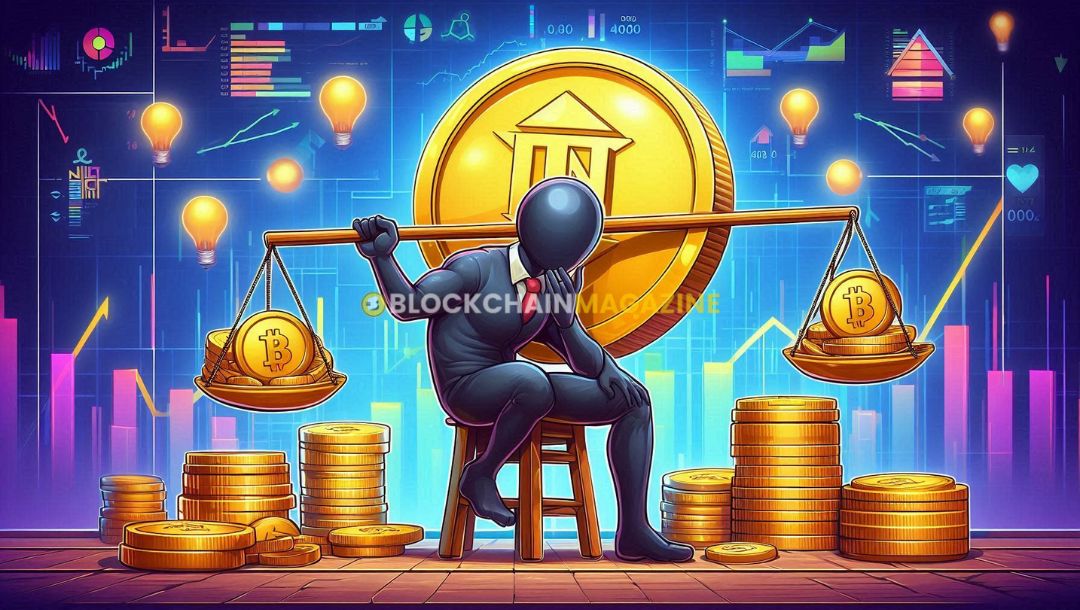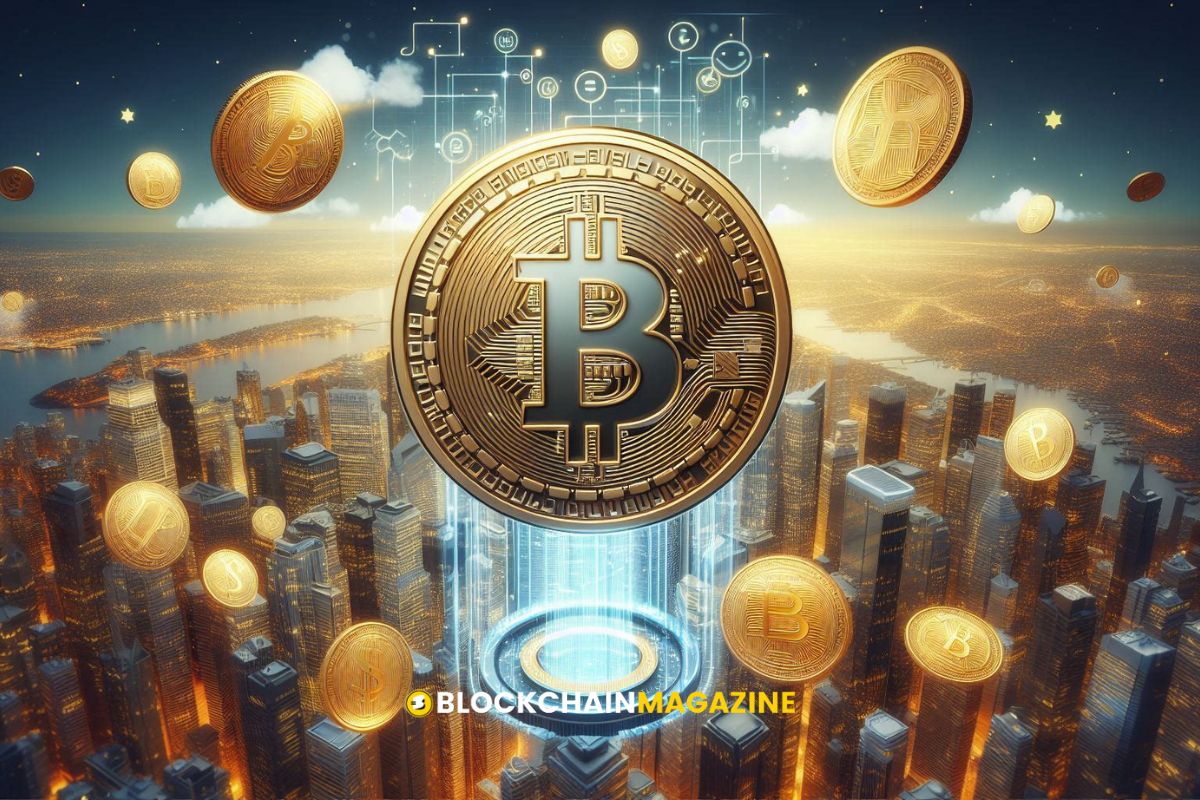Is This Sustainable? Examining the Long-Term Outlook of NFTs Defying the Crypto Market
While the NFT market has undoubtedly faced significant challenges, the underlying technology and the concept’s potential utility suggest that NFTs have a future. This future will likely be characterized by a shift towards more practical applications, greater stability, and a focus on sustainable growth.
Key Takeaways
- NFTs have faced significant market challenges but show potential for future growth and stability.
- Greater regulation and transparency are needed to ensure a credible and stable NFT market.
- Sustainable and eco-friendly solutions are emerging to address environmental concerns associated with NFTs.
- The NFT market is expected to shift towards more practical applications beyond art and collectibles.
- Community and industry perspectives highlight the importance of ethical considerations and sustainable practices in the NFT space.
The Evolution of NFTs in the Crypto Market
Historical Context and Initial Boom
NFTs first gained significant attention due to their novelty and the speculative hype surrounding them. Early adopters were enticed by the potential for quick returns, with some digital artworks and collectibles selling for millions. However, the market soon became saturated, and the basic economic principle of supply and demand came into play, leading to a decline.
Market Correction and Current Trends
The decline in NFT sales in 2024 marked a market correction after the initial hype. This downturn was tied closely to the broader crypto market. Experts predict a resurgence driven by utility-focused projects, mainstream adoption, and technological advancements.
Future Projections
Looking ahead, dynamic NFTs are expected to revolutionize digital assets by offering interactive and programmable experiences. These tokens will feature changing visuals, adaptive functionalities, and evolving narratives, captivating audiences and fostering a dynamic ecosystem. The future of NFTs appears promising, with potential for significant growth and innovation.
Technological Foundations and Innovations
Blockchain Technology and NFTs
The key to understanding the future of NFTs lies in recognizing their foundational technology and the unique value proposition they offer. Blockchain technology, which underpins NFTs, provides a level of authenticity, scarcity, and security in the digital world that was previously unattainable. This technological backbone means that NFTs have a potential utility that extends far beyond the speculative art market.
Smart Contracts and Their Role
Smart contracts are self-executing contracts with the terms of the agreement directly written into code. They play a crucial role in the NFT ecosystem by ensuring transparent and trustless transactions. These contracts automate processes, reducing the need for intermediaries and thereby lowering costs and increasing efficiency.
Innovations Driving Sustainability
Technological innovations are driving the sustainability of NFTs. Developers are increasingly focusing on creating more energy-efficient blockchain solutions to address environmental concerns. Collaborations between nft developer profiles in 2024 are shaping the future of digital ownership, tackling technical, legal, and market challenges. As the technology evolves, new and innovative use cases for NFTs are likely to emerge.
Environmental and Ethical Implications
Energy Consumption Concerns
The energy-intensive nature of some blockchains has raised significant concerns about the environmental impact of minting and trading NFTs. Emerging concerns about environmental sustainability have come to the forefront of the NFT conversation. Some NFT platforms are exploring eco-friendly solutions to address blockchain’s environmental impact. However, the high levels of energy consumption continue to be a major issue.
Sustainable Alternatives
While NFTs offer numerous advantages, it’s essential to recognize challenges, including environmental considerations. Some platforms are actively seeking sustainable alternatives to mitigate their environmental footprint. These efforts include transitioning to less energy-intensive blockchains and implementing carbon offset programs.
Ethical Considerations in NFT Preservation
The ethical implications of NFTs extend beyond environmental concerns. Issues such as plagiarism, copyright infringement, and potential market manipulation have cast a shadow over the industry. Additionally, the absence of comprehensive legal frameworks for digital preservation actions further complicates the ethical landscape. It is crucial to address these challenges to ensure the long-term viability and ethical integrity of NFTs.
Regulatory and Economic Factors
Need for Greater Regulation
The regulatory environment for NFTs is currently marked by a lack of clarity and uniformity, creating a challenging situation for creators, consumers, and regulators alike. The absence of standardized regulations complicates the understanding of legal aspects, rights, and obligations associated with NFT ownership. This disjointed regulatory scenario acts as a barrier to the market’s maturation. Greater regulation, transparency, and a focus on sustainable practices could lead to a more stable and credible NFT market.
Economic Stability and Market Maturation
The NFT market’s downturn was deeply intertwined with broader economic conditions. Rising inflation and the cost of living have affected disposable incomes globally, making individuals and investors more cautious with their spending, especially in speculative and non-essential assets like cryptocurrencies and NFTs. The challenges faced by the NFT market have prompted a reevaluation and potential maturation of the space. As these aspects evolve, they could lead to a more stable and credible NFT market.
Impact on Investors
Investors in the NFT market face substantial challenges, including regulatory uncertainty, security risks, market volatility, and scalability issues. These factors contribute to a complex investment landscape that requires careful navigation. The potential for high returns exists, but so do significant risks. Investors must stay informed and adapt to the current trends and challenges in the cryptocurrency market to make sound investment decisions.
Practical Applications and Utility
NFTs Beyond Art and Collectibles
The potential applications of NFTs extend far beyond digital art and collectibles. They can be used in areas such as digital identity, property rights in virtual worlds, and authenticating and monetizing digital content for creators in music, literature, and other arts. This shift from speculative trading to practical utility could provide a more stable foundation for the future of NFTs.
Real-World Use Cases
NFTs have the potential to revolutionize ownership and transactions in various industries, both digital and physical. Some prominent use cases include:
- Digital art and collectibles
- Gaming and virtual worlds
- Music and entertainment
- Fashion and sports
- Decentralized finance (DeFi)
- Tokenization of real-world objects
- Domain name ownership
- Licenses and certifications
- Event ticketing
- Real estate
Potential for Broader Adoption
As the technology evolves, new and innovative use cases for NFTs are likely to emerge. The versatility of NFTs indicates their potential to transform various sectors, making them a key component in the future of digital and physical transactions. The NFT market is evolving with a focus on practical applications, such as hybrid NFTs, RWA tokenization, NFT gaming, and Bitcoin-based NFTs. These developments are top amazing potential signs of recovery and a shift towards utility-driven NFTs in 2024.
Community and Industry Perspectives
Voices from the NFT Community
The NFT community is vibrant and diverse, with members ranging from artists and collectors to developers and investors. Community interactions play a crucial role in fostering harmonious relationships and enhancing customer identification within the NFT space. Regular online events, such as artist AMAs and digital art contests, help to create a sense of belonging and engagement among participants.
Industry Leaders’ Insights
Industry leaders emphasize the importance of innovation and sustainability in the NFT market. They highlight the need for continuous technological advancements to ensure the long-term viability of NFTs. With respect to NFTs, and digital assets in general, the question becomes at what point the asymmetric information and/or delayed revelation of quality demand a more regulated approach to maintain market stability.
Public Perception and Media Coverage
Public perception of NFTs is shaped significantly by media coverage. While some view NFTs as a revolutionary technology with vast potential, others are skeptical about their sustainability and environmental impact. Media narratives often influence investor confidence and market trends, making it essential for accurate and balanced reporting.
Future Outlook and Long-Term Sustainability
Predictions for Market Rebirth
The future of social NFTs in 2024 focuses on sustainability, community building, and social impact. Emphasis on inclusive environments, social tokenization, and environmental responsibility will likely drive the market forward. Anticipated future behaviors suggest a shift from product-based to customer-based marketing approaches, highlighting the need for long-term customer-brand relationships.
Strategies for Sustainable Growth
In 2024, expect a push for environmentally friendly NFT solutions as projects prioritize sustainability and explore technologies with lower energy consumption. This reflects a conscientious effort within the NFT community to balance technological progress with environmental responsibility. Key strategies include:
- Adoption of eco-friendly blockchain technologies
- Integration of AR and VR for immersive experiences
- Focus on community-driven projects
Long-Term Viability of NFTs
Maintaining NFTs and their linked digital artworks and collectibles requires good long-term stewardship principles and practices. Ethical considerations are paramount, especially given the high rate of energy consumption associated with blockchain technology. The question remains: Is it ethical to preserve what is potentially harmful to our planet?
The future developments in NFTs inspire a new and more promising future for blockchain technology, but they also raise significant ethical and environmental questions that must be addressed for true sustainability.
As we look towards the future, the long-term sustainability of blockchain technology remains a pivotal focus. To stay updated with the latest trends and insights in this dynamic field, visit our website and explore our comprehensive coverage. Your journey into the future of blockchain starts here.
Conclusion
While the NFT market has undoubtedly faced significant challenges, the underlying technology and the concept’s potential utility suggest that NFTs have a future. This future will likely be characterized by a shift towards more practical applications, greater stability, and a focus on sustainable growth. The challenges faced by the NFT market have prompted a reevaluation and potential maturation of the space. The downturn has highlighted the need for greater regulation, transparency, and a focus on environmentally and economically sustainable practices. As these aspects evolve, they could lead to a more stable and credible NFT market. Ultimately, the long-term outlook for NFTs will depend on the industry’s ability to address these concerns and adapt to a rapidly changing landscape. With a commitment to sustainable and eco-friendly solutions, the NFT market can navigate its current challenges and emerge stronger and more resilient.
Frequently Asked Questions
Is it still good to invest in NFTs?
While the NFT market has faced significant challenges, the underlying technology and potential utility suggest that NFTs have a future. This future will likely focus on practical applications, greater stability, and sustainable growth.
What are the main challenges faced by the NFT market?
The NFT market has faced challenges such as the need for greater regulation, transparency, and a focus on environmentally and economically sustainable practices. Addressing these issues could lead to a more stable and credible market.
Are there sustainable alternatives for NFTs?
Yes, there are more sustainable routes emerging in the NFT space. These alternatives aim to reduce the ecological impact of NFTs by using more energy-efficient platforms and practices.
What are the environmental concerns related to NFTs?
The primary environmental concern is the high energy consumption associated with blockchain technology used in NFTs. This raises questions about the ethical implications of preserving NFTs given their carbon footprint.
How has the NFT market evolved over time?
The NFT market experienced a significant boom followed by a sharp correction in 2023. This downturn highlighted the need for market maturation and sustainable practices, but industry leaders remain hopeful for a market rebirth.
What is the long-term viability of NFTs?
The long-term viability of NFTs depends on addressing current challenges, including environmental impact and regulatory issues. With sustainable growth strategies, NFTs could have a promising future.
Stay informed with daily updates from Blockchain Magazine on Google News. Click here to follow us and mark as favorite: [Blockchain Magazine on Google News].
Get Blockchain Insights In Inbox
Stay ahead of the curve with expert analysis and market updates.
latest from tech
Disclaimer: Any post shared by a third-party agency are sponsored and Blockchain Magazine has no views on any such posts. The views and opinions expressed in this post are those of the clients and do not necessarily reflect the official policy or position of Blockchain Magazine. The information provided in this post is for informational purposes only and should not be considered as financial, investment, or professional advice. Blockchain Magazine does not endorse or promote any specific products, services, or companies mentioned in this posts. Readers are encouraged to conduct their own research and consult with a qualified professional before making any financial decisions. The featured image used is just a creative depiction of the title and it does not intend to hurt sentiments of any person or institution. If it hurts anyone sentiments, please do not hesitate to reach out to Blockchain Magazine.

 Bitcoin
Bitcoin  Ethereum
Ethereum  XRP
XRP  Tether
Tether  Solana
Solana  Dogecoin
Dogecoin  USDC
USDC  Cardano
Cardano  Lido Staked Ether
Lido Staked Ether  TRON
TRON  Chainlink
Chainlink  Avalanche
Avalanche  Wrapped stETH
Wrapped stETH  Stellar
Stellar  Wrapped Bitcoin
Wrapped Bitcoin  Sui
Sui  Hedera
Hedera  Toncoin
Toncoin  Shiba Inu
Shiba Inu  WETH
WETH  Polkadot
Polkadot  Parkcoin
Parkcoin  LEO Token
LEO Token  Litecoin
Litecoin  Bitget Token
Bitget Token  Bitcoin Cash
Bitcoin Cash  Uniswap
Uniswap  Hyperliquid
Hyperliquid  Official Trump
Official Trump  Wrapped eETH
Wrapped eETH  Pepe
Pepe  USDS
USDS  NEAR Protocol
NEAR Protocol  Ethena USDe
Ethena USDe  Aave
Aave  Aptos
Aptos  Internet Computer
Internet Computer  Ondo
Ondo  Ethereum Classic
Ethereum Classic  Monero
Monero  POL (ex-MATIC)
POL (ex-MATIC)  OKB
OKB  Mantle
Mantle  Cronos
Cronos  Dai
Dai  Algorand
Algorand  MANTRA
MANTRA  Render
Render 




